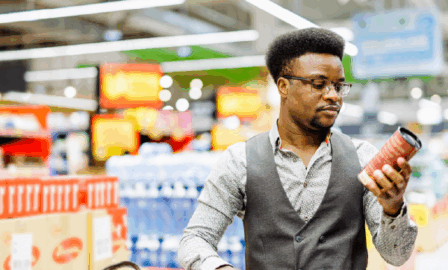Artificial Intelligence – Uses in Food Quality and Regulatory Operations
By integrating AI into the food and beverage manufacturing process, companies can maximize efficiency in quality control. A forecasted CAGR of 28% for AI applications in this industry means it’s more important than ever to understand how to leverage this technology. Machine learning has become sophisticated enough to handle challenges specific to food and beverage, including the lack of uniformity among products and the ever-present risk of contamination. AI can be used to improve order accuracy, meet regulatory guidelines, avoid a potential safety crisis, and reduce overall waste.
Sensors, lasers, x-rays, and scanners analyze incoming data in order to make real-time adjustments on the factory floor. Facial recognition software can scan products coming down the line for indications of a lack of uniformity, the presence of blemishes, and other quality markers. The software can sort food and tweak ingredient ratios based on the condition of each batch. Sensors called “electronic noses” work as electrochemical gauges to “smell ” or detect potential pathogens in raw food. Other sensors record temperature, humidity, light, and various environmental factors in order to alert the system of changes and to make any necessary adjustments. Capturing this data is crucial for FSMA and FDA compliance.
Personal assistants powered by AI have also started to appear in the food and beverage industry. With the help of voice assistants, warehouse pickers can improve their accuracy on orders by 85%. Soon manufacturers and retailers might find themselves receiving orders placed by AI assistants instead of coming from people directly. Companies will need to ensure that these types of orders are still filled accurately.
Preventing Recalls through AI
AI can improve food safety and prevent possible food recalls by monitoring data and compliance with sanitation protocol. Software can flag when something happens outside of a system’s usual operating pattern, which can indicate a possible risk of cross-contamination. Facial and object recognition can monitor factory employees with 96% accuracy to ensure they follow sanitation protocol. The software can check if workers are wearing the proper hats and masks to avoid food contamination.
Even after a product leaves the warehouse, AI can track product quality post-distribution. Amazon uses natural language processing to track reviews, complaints, and other customer data to get ahead of a possible recall and quickly remove a suspicious product from the market. Implementing block chain improves food quality monitoring by creating a transparent record of the product’s history. For high-risk produce such as lettuce, block chain enables companies to trace an item’s source much more rapidly than using the protocol of the past. This saves time and money and can help to preserve consumer trust.
Reducing Food Waste
Reducing waste through AI applications can increase the amount of product that passes quality standards. TOMRA’s cutting-edge food sorting and peeling robots have used machine learning to cut down on 5-10% of food waste. Precision cutting increases the amount of usable product. In food and beverage manufacturing, cleaning uses an estimated 30% of a site’s water and energy budget. Researchers are working on creating a self-optimizing cleaning program that washes foods and machines according to the level of residue detected on each item.
Investing in AI is a wise decision for anyone in the food and beverage industry. Retailers and manufactures alike can use the technology to augment their quality and regulatory strategies and even boost profitability. As AI continues to develop, its capabilities and cost-saving potential will continue to expand.
Coauthor and contributions by Sabrina Zirkle



